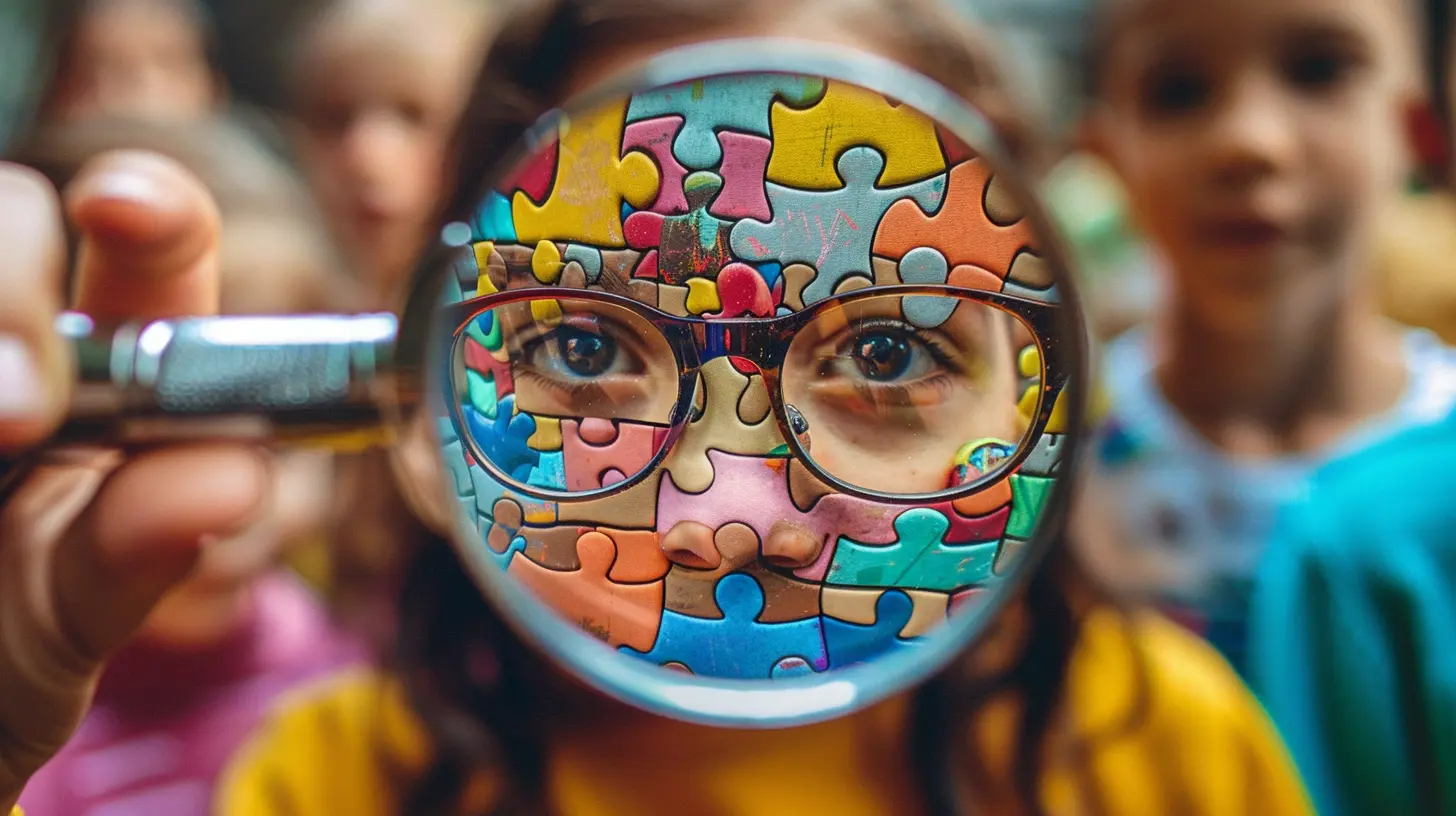How to Promote Ethical Problem Solving in the Classroom
9 August 2025
Have you ever watched students face a moral dilemma during a group project and freeze like deer in headlights? Or maybe you've heard a heated debate over what’s “right” or “fair” in class? That’s where ethical problem solving swoops in like a superhero. 🦸♀️🦸♂️
In today’s fast-paced, information-loaded world, teaching academic content just isn’t enough. Our kids need guidance to navigate the grey areas of life — where there’s no equation, no blueprint, and definitely no cheat sheet. That’s why promoting ethical problem solving in the classroom is such a game changer!
So, let’s dive into the how, shall we?
🌱 What Is Ethical Problem Solving, Anyway?
Think of it as a GPS for decision-making. Ethical problem solving is the process of choosing the best course of action in a situation that involves values, morals, and fairness.And no — it’s not about being perfect or always having the “right” answer. It's about being able to pause, reflect, evaluate options, and act with integrity. We’re basically helping students grow their moral compasses (pretty cool, right?).
🎯 Why Ethical Problem Solving Matters in the Classroom
Here’s the deal — every subject, from math to literature to science, presents ethical challenges. Students might struggle with issues like:- Cheating on a test (everyone’s doing it — should I?)
- Deciding to include someone in a group who’s always left out
- Standing up to a friend who plagiarized
- Speaking up during a classroom discussion on a controversial topic
We want our students to learn to face these situations with courage and kindness. Promoting ethical problem solving gives them the tools to do just that — think of it like giving them a moral toolbox.
🏗️ Step-by-Step: How to Promote Ethical Problem Solving in the Classroom
Alright, let’s roll up our sleeves and look at practical ways to bring ethical learning to life.1. 🚀 Set the Right Classroom Culture
First things first — ethics won’t stick in a cold, rule-heavy atmosphere. To teach ethical problem solving, your classroom needs to ooze empathy, respect, and openness.- Model ethical behavior: Kids watch everything we do. Show transparency, admit mistakes, and treat everyone fairly.
- Encourage respectful debate: Let students disagree, but guide them to listen and respond with empathy.
- Celebrate honesty and responsibility: Acknowledge students who make the tough, ethical choice — even when it costs them something.
_Think of it like planting seeds; without the right soil (i.e., class culture), nothing good grows._
2. 💬 Use Ethical Dilemma Stories
Stories are magic! They evoke emotion, challenge the mind, and slip under defenses. To promote ethical thinking, use short stories, case studies, or real-life news articles filled with moral choices.Try this:
> “Emily finds a phone in the hallway. It's brand new, no password, and texts start popping up. She’s tempted to return it, but her friends say, ‘Keep it!’ What should she do?”
Now ask: What are the options? Who is affected? What values are at play?
These bite-sized dilemmas get students thinking without preaching. Plus, they’re fun!
3. 🧠 Teach a Simple Ethical Decision-Making Framework
Decision-making can feel like wandering in a fog. Let’s give students a flashlight!Introduce a step-by-step ethical decision-making process — something like:
1. Recognize the problem: What’s the ethical concern here?
2. Identify stakeholders: Who’s affected?
3. Explore options: What are the choices?
4. Reflect on values: What values apply? Honesty? Respect? Justice?
5. Make a decision: Choose the best option.
6. Act and evaluate: What happened afterward? Would you do it again?
You can turn this into a class poster, a worksheet, or a group activity. Keep it fun and visual!
4. 🎭 Role-Play, Don’t Just Talk
Let’s face it — discussions are great, but nothing beats acting it out. Role-playing gets students to feel the situation, not just think about it.Set up simple scenes where groups take on different perspectives. One group might defend a classmate who got caught breaking the rules. Another might argue why punishment is needed. Then switch roles!
This boosts empathy and adds nuance to ethical decision-making. Plus, students love it. It’s like drama class meets moral philosophy.
5. 🧩 Integrate Ethics Into Every Subject
Who says ethics is just for social studies?- In science, debate the ethics of gene editing or animal testing.
- In English, unpack characters' moral decisions in books.
- In history, explore the consequences of ethical (or unethical) leadership.
- In math, discuss fairness in statistics or distribution of resources.
Sneak ethical thinking into every topic, and soon students won't even realize they’re thinking critically — it’ll just be natural.
6. 👂 Listen More Than You Talk
We get it — you’ve got wisdom to share. But part of ethical growth is learning to find your own voice.Give students space to reflect. Ask open-ended questions like:
- “Have you ever faced a similar situation?”
- “How would you feel if you were in their shoes?”
- “What would be the hardest part of doing the right thing here?”
Then... pause. Let the silence stretch. Give them time to dig deep.
You’ll be amazed at the insights that bubble up when kids feel truly heard.
7. 📚 Start an Ethics Journal
Encourage students to keep a journal where they:- Reflect on ethical dilemmas they’ve faced
- Write about decisions they regret or are proud of
- Draft their own personal code of ethics
It’s a safe, judgment-free zone where they can explore their values. Plus, it strengthens self-awareness — a key ingredient in ethical growth.
Bonus: It builds writing skills too! 🎉
8. 🤝 Foster Peer Collaboration and Discussion
Put students into small groups and give them tricky ethical scenarios to solve together. Watch the sparks fly!Ethical problem solving is a social skill — it thrives in conversation. When students hear multiple viewpoints, they’re forced to re-evaluate their assumptions.
And sometimes, hearing something from a friend hits harder than when it comes from a teacher. That’s just how teen brains work!
9. 🛠️ Encourage Real-Life Ethical Action
Theory’s great, but action is better. Turn classroom ethics into real-world kindness.- Organize service projects
- Create “kindness missions”
- Set up a student-led ethics committee
- Have students identify and tackle a problem in their school
When kids make real ethical choices and see the ripple effects, it sticks with them for life.
10. 💡 Reflect and Celebrate Ethical Growth
At the end of the term (or year!), reflect on how much students have grown.Throw a “Values Day” where students share what they’ve learned, role-play dilemmas, or even present personal growth stories.
Acknowledge their courage, honesty, and empathy. Celebrate the messy, beautiful journey of learning to do what’s right — even when it’s hard.
🌈 Final Thoughts: Making Ethics Stick
Promoting ethical problem solving in the classroom isn’t about one big lesson — it’s about tiny, consistent nudges. Every little discussion, every dilemma debated, every journal entry written — it all adds up.And guess what? The more we trust kids with these conversations, the more they rise to the occasion. They want to do the right thing. They just need a little help figuring out what that is.
You’re not just teaching ethics — you’re quietly shaping future leaders, citizens, and kind humans.
Now that’s a teaching legacy worth leaving, don’t you think?
📌 Quick Recap: Your Classroom Ethics Toolkit
- Create a safe, respectful culture- Use real, relatable dilemmas
- Teach a decision-making framework
- Role-play and act it out
- Weave ethics into all subjects
- Listen deeply
- Encourage journaling and reflection
- Spark collaborative discussions
- Inspire real-life ethical projects
- Celebrate progress and impact
Put these into practice, and you won’t just be teaching — you’ll be transforming lives.
all images in this post were generated using AI tools
Category:
Problem SolvingAuthor:

Monica O`Neal
Discussion
rate this article
1 comments
Rex McGill
Great insights! Encouraging ethical discussions in the classroom fosters critical thinking and prepares students for real-world challenges.
August 14, 2025 at 4:07 AM

Monica O`Neal
Thank you! I completely agree—fostering ethical discussions not only enhances critical thinking but also equips students to navigate real-world challenges effectively.


